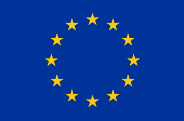
Safe non-food consumer Products in the EU and China
The term ‘online selling’ is frequently used, but if you look at EU legislation, it refers to products being sold via a website, via an online platform or an app. Many websites or apps are operated by or on behalf of a business, and their purpose is to give customers access to the products offered by the business. When it comes to online marketplaces, they are considered as intermediaries under the current consumer law definitions (if the same business also acts as distributor, manufacturer, importer of fulfilment service provider for certain products, in relation to those they are considered as economic operators).
The safety requirements for products sold online are exactly the same as those for products offered for sale via any other sales channel. All products placed on the market must be safe.
To ensure EU market surveillance authorities can enforce the European rules, all businesses that sell certain harmonised products in the EU must identify a responsible person in the EU. It is illegal for businesses to sell directly from a web shop outside the EU to consumers in the EU, if they don’t have such a responsible person.
This subject is dealt with in more detail in another section of this module.
So that a business can meet all the legal requirements when it wants to offer products for sale online, they should start by identifying a responsible person in the EU who can represent them. Once this is in place, then the trader should check that the product fulfils all legal requirements. This means that the manufacturer must have compiled the technical documentation. If the product is required to be CE-marked, the manufacturer must have drawn up and signed a declaration of conformity for the product. Finally, the product must be correctly CE marked.
The manufacturer must produce the documents and they are the only one who can, and it is the manufacturer that must ensure that the products are safe. It is important for manufacturers to understand the requirements that their product have to fulfil.
Online traders should check:
1) Technical documentation – the manufacturer must compile a technical documentation for the product, and the trader should check that it exists and that it is complete. In practice, the easiest way to do this might be through a visit the manufacturer and go through the technical documentation on the spot. The contents of technical documentation are covered in more detail in the Conformity assessment module.
A trader should always check that they are selling the same version of the product that is mentioned in all documents. Often manufacturers produce the same product under different brand names or model names. In such cases, it is important that the actual brand name and the actual model name can be found on all the documents and the product.
A trader must always be able to connect the documentation and the product to each other without any kind of ambiguity.
2) Declaration of conformity – this is required for all products that must be CE-marked.
If CE-marking is required, then the trader should check that the manufacturer has drawn up and signed an EU Declaration of Conformity for the product. The trader must acquire the declaration and send it to the representative in the EU, otherwise, it is not legal to sell the product. The trader should check the Declaration of Conformity and the required contents.
3) Product checklist
In an ideal situation, the trader needs to see the product to undertake these checks. Where possible, they should either ask the manufacturer to send an item of the product, or the trader should visit the manufacturer to check the product.
If this is not possible, the trader could ask the manufacturer to provide a photo, which the trader can check.
In summary:
You can learn more about CE marking and Conformity assessment in other modules on the Academy.
Learn more about e-commerce, distance and off premises selling
Learn more about market surveillance work
You can learn more about this subject in the case studies section.

This website was created and maintained with the financial support of the European Union. Its contents are the sole responsibility of SPEAC project and do not necessarily reflect the views of the European Union.